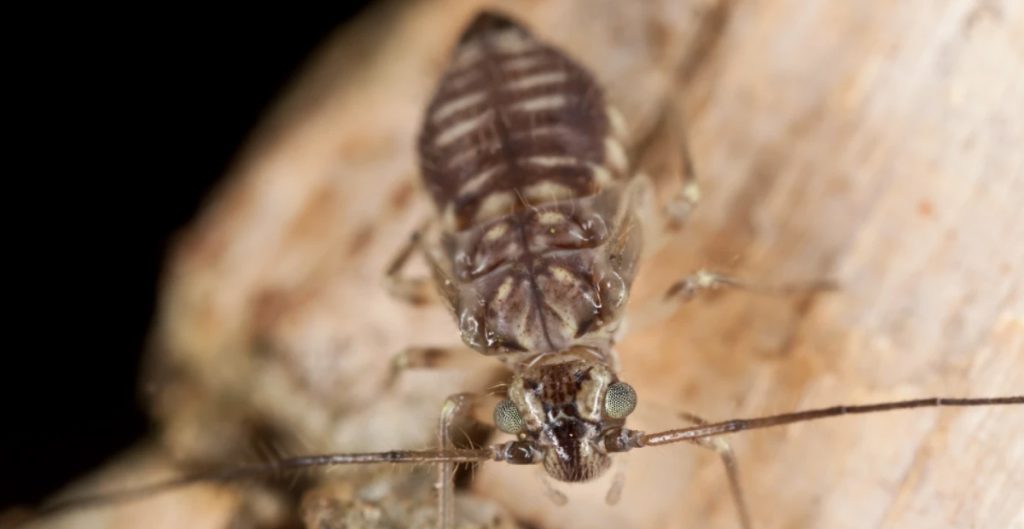Understanding Booklice: Causes, Risks, and How to Prevent Them
What Are Booklice?
Booklice (Psocids) are tiny insects that are often overlooked due to their small size and appearance. While they don’t cause harm to humans directly, their presence can be a sign of moisture problems in your home. They can damage property, trigger allergies, and contribute to the growth of mould.
Booklice Appearance and Behavior
- Size: Booklice are very small, usually measuring 1 to 2 mm in length, making them difficult to spot without a magnifying glass.
- Color: They have soft, light-colored bodies, ranging from translucent white to light brown.
- Habitat: Booklice thrive in areas with high humidity and moisture. They are commonly found in places like basements, bathrooms, kitchens, and inside books or paper storage.
Where Do Booklice Live?
Booklice are attracted to moist, humid environments where mould and mildew can thrive. They feed on mould, fungi, and starch that can grow on organic materials. Common places you may find them include:
- Bookshelves and Paper Storage: They are often found in old books, paper, and cardboard, which provide a food source of mould.
- Kitchens and Bathrooms: Areas with poor ventilation, water leaks, or excess moisture are perfect breeding grounds.
- Basements: Damp, dark spaces are ideal for booklice to thrive.
Health Risks Associated with Booklice
Although booklice don’t bite, their presence can be problematic, especially when they contribute to mould growth. Mould is a serious health risk, and booklice may make the situation worse by spreading it.
- Allergic Reactions: Dust and droppings from booklice can cause allergic reactions such as sneezing, coughing, and skin irritation.
- Mould-related Issues: The mould they feed on can cause respiratory problems, particularly for individuals with asthma or weakened immune systems.
Preventing Booklice Infestation
Prevention is the key to managing booklice. Here are some steps you can take to ensure these pests don’t invade your home:
- Control Humidity Levels:
Booklice thrive in humid environments. Use dehumidifiers in areas that are prone to moisture, such as basements, bathrooms, and kitchens. Maintaining indoor humidity below 50% can significantly reduce booklice populations. - Fix Water Leaks:
Check for any water leaks around your home, particularly in areas like the kitchen, bathroom, and basement. Fixing leaks will eliminate the damp conditions that attract booklice. - Improve Ventilation:
Ensure that your home is well-ventilated, especially in areas that are prone to moisture. Installing fans or opening windows in rooms with high humidity will help reduce the likelihood of booklice infestations. - Clean Regularly:
Vacuum your home regularly, especially in areas where booklice might hide, such as bookshelves, corners, and damp spots. Regular cleaning can reduce food sources like mould and fungi. - Mould Removal:
If you discover mould in your home, clean it immediately. Use mould-removal products or seek professional assistance to safely eliminate mould and prevent it from returning. - Store Books Properly:
Keep books, paper, and cardboard in dry, well-ventilated areas. If you’re storing these items in a basement or attic, make sure the area is dry and sealed to prevent booklice from infesting them.
When to Call a Professional
If your home is experiencing a booklice infestation that you cannot control, or if mould growth is extensive, it’s best to consult a pest control or mould remediation expert. These professionals can help eliminate both the pests and the moisture problem that makes your home a breeding ground for them.
Final Thoughts
While booklice may be small, they can indicate a much larger problem in your home. By managing humidity, preventing mould, and keeping your home dry and clean, you can keep these pests at bay. Regular inspections and prompt action are key to avoiding a full-blown infestation.
For more tips on controlling booklice and mould removal, contact us today for a professional consultation!

